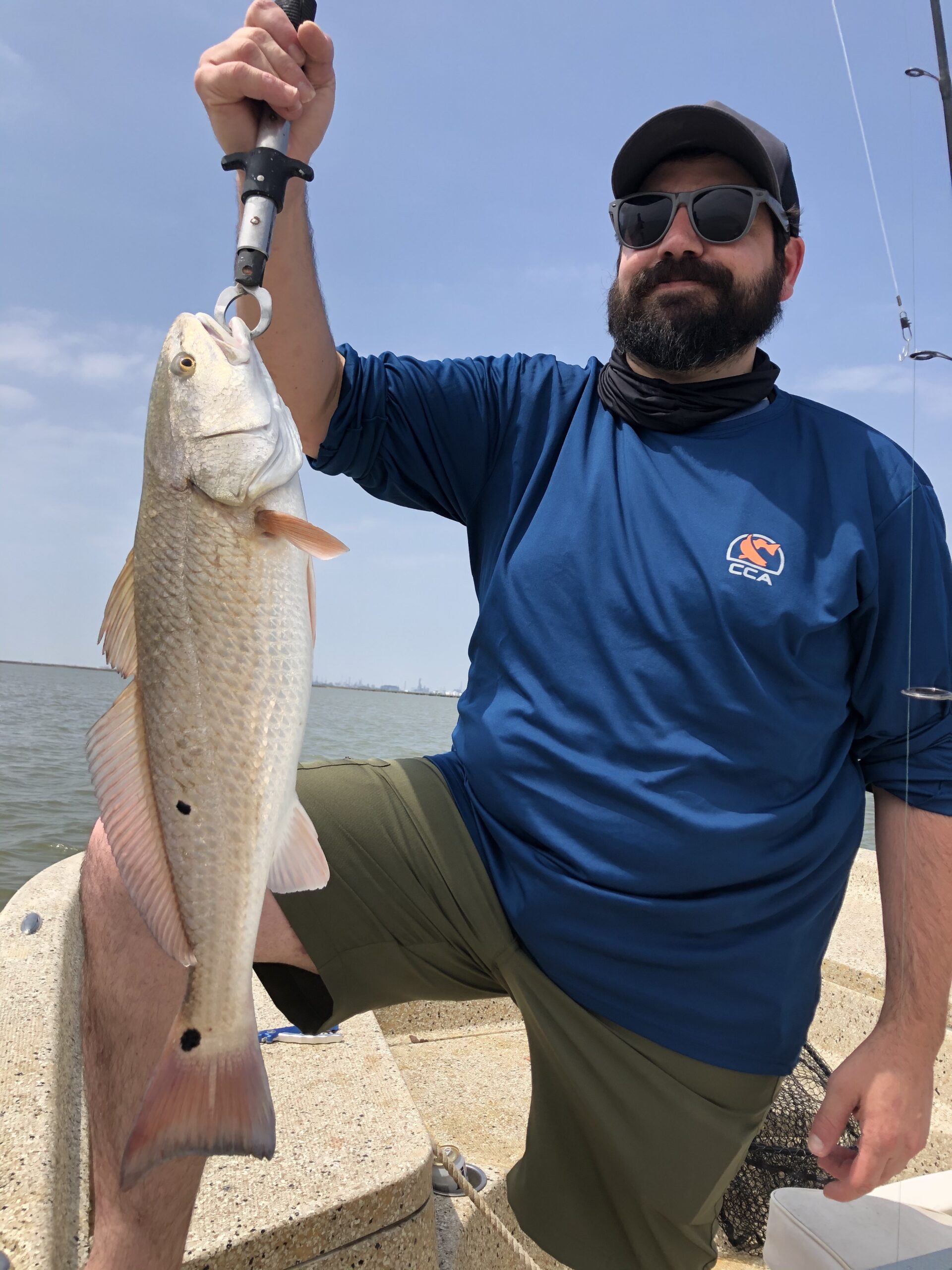Saltwater anglers adapt after rains
By Nate Skinner for Lone Star Outdoor News
The story originally appeared in the May 28 issue of Lone Star Outdoor News
Upper Texas coast estuaries receive significant freshwater inflows from the major watershed systems of the rivers, creeks and bayous that drain into them. These influxes deliver nutrients to the bays and moderate salinity levels, helping to keep these fisheries in a premier state of productivity. Too much freshwater into these systems, though, can send fish and anglers looking for saltier water.
The old adage, “If a little is good, then a lot is better,” does not apply.
Recent flooding events caused salinities to plunge and water clarities to diminish, especially along the upper reaches of bay systems closest to the sources of freshwater inflows. Anglers have had to adjust their strategies in order to find fish, as much of the playing field has been eliminated.
Matagorda area guide, Capt. Ryan Hubbard, said the eastern portion of West Matagorda bay is full of fresh, dirty-looking water due to runoff from the Colorado River.
“You definitely have to focus on the western half of West Matty to find decent water right now,” Hubbard said. “East Matagorda Bay handles flood events a little better, and that’s where I’ve been spending the majority of my time lately.”
Hubbard has been focusing his efforts along the south shoreline of East Matagorda Bay, where he’s been wading the edges of oyster reefs and mixed mud and shell bottoms in thigh- to waist-deep water.
“I’ve mostly been throwing live croaker while wade-fishing,” he admitted. “There’s been some specific areas holding good numbers of speckled trout to 17 inches. Redfish ranging from 21 to 27 inches have been mixed in.”
Capt. Ryan Battistoni has been focusing his efforts in West Galveston Bay, as far away from the sources of freshwater inflows as he can get.
“All of the major bayous, rivers and creeks dumped tremendous amounts of freshwater into our bay system,” Battistoni explained. “Areas near the mouths of these tributaries are just not fishable right now.”
Battistoni said portions of the Intracoastal, flats along the inside of the San Luis Pass, and open water stretches in the middle of West Galveston Bay have held the most fish.
“When the wind is light, the pass is the place to be if you like to wade-fish,” he said. “During an incoming, flats in knee- to waist-deep water have been teeming with specks. The key is to focus on areas with rafts of mullet.”
Battistoni has been chunking top-water plugs and soft plastic jigs.
“There’s been a ton of bird activity in the middle of West Galveston Bay, because a lot of the fish and shrimp got pushed out of the back lakes and into the middle of the bay from all of the rain we had.” He said. “The birds are
working over schools of trout that are chasing the shrimp to the surface. You have to cast your lure or bait right where you see shrimp jumping out of the water along the surface in order to get bit.”
On Sabine Lake, guide Bill Watkins said the upper portion of Sabine Lake is fairly torn up from runoff.
“Mid-lake areas and south to the channel and Sabine Pass are where the saltiest water is located,” he said. “I haven’t been catching many redfish lately, but the trout have been stacking up in certain areas.”
Most of the speckled trout Watkins and his anglers have been catching are staging over mud and shell where there are swarms of shrimp off of the shorelines in 6-8 feet of water. Most of the specks are in the 2-3 pound class, and they have been willing to strike soft plastics.
“The jetties are also holding a lot of fish right now as well, especially when the water is clean along the rocks,” Watkins said.


